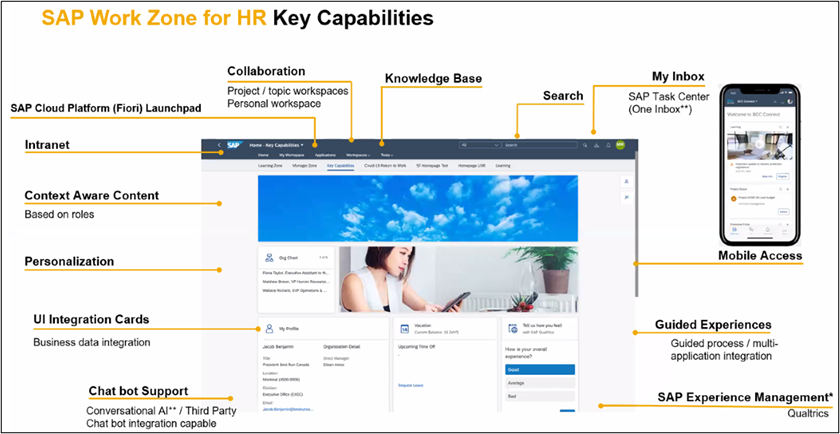Ensuring legal compliance in your managed payroll services
If the COVID-19 pandemic has taught us anything, it is that our environment is unpredictable, and having the right Technology, Process and Policies in place accelerates our adaptation in an exemplary evolution. With the importance Human Resources has demonstrated in every organization, having the right kind of guidance in an advisory service is important from a compliance standpoint.
Given the 2020 global impact that geared organizations through several changes, and the 2021 planned legislative changes, it is imperative for Employers and Employees to stay up-to-date to ensure Employers are compliant with the changes in regulations and laws, and that their Employees are aware of their rights and responsibilities.
Transforming Through Compliance – As organizations move through HCM transformations or HR process audits, based on the nature of their industry, country and organization structure, ensuring your current or desired solutions and practices meet the current legislations will mitigate compliance risks.
We will address some 2020 organization impacts commonly observed, 2021 changes in Payroll and Recruitment trends and Legislative & Regulatory changes effective 2021 in Canada.
2020 Organization Impacts
As the environment of 2020 began to drastically change, it was indefinite how organizations would be impacted by an erratic crisis. It also presented an opportunity for organization to define how prepared, how adaptable and how creative they are in their organizational culture mindset. As many of us can relate, some of these impacts include:
Health, Safety and Awareness
The well-being of individuals would be the first target of consequence due to the reduced social interactions and self-isolation practices. It was evident that HR Professionals would be the “front line” workers of the team’s mental health to counsel and coach with empathy.
Remote Work
Overnight, HR and IT partnered to gear the teams working style to 100% remote efficiently. This involved new equipments, building flexible home office workspaces, and ensuring secure work networks
Temporary Layoff and Constructive Dismissal
Prior to 2020, for most Canadian organizations, temporary layoffs were considered uncommon mainly due to the risk of constructive dismissal claims especially if such layoffs were not taken into consideration as being regular and were expressly permitted under an employment agreement or as part of the industry practice.
Now, temporary layoffs or COVID-19 related leaves of absence have become a norm due to several businesses being impacted. Although government programs such as the Canada Emergency Wage Subsidy (CEWS), the Canada Emergency Response Benefit (CERB), and the Canada Recovery Benefit (CRB) that provide assistance to Employers and Employees may have altered the frequency of constructive dismissal claims, it should be anticipated that the halt of these government benefits could give rise to employee litigations.
Do You Know?
2021 Canadian Payroll Changes
Each year, the CPP, EI and income tax rates are decided, and the earning bracket to which rate applies is decided by the CRA, Service Canada and the Canada Employment Insurance Commission (CEIC). For 2021:
- Service Canada has increased the CPP contribution rate to 5.45% (5.25% in 2020) and the maximum pensionable earnings to $61,600 ($58,700 in 2020).
- The CEIC has retained the EI premium rate for employees at 1.58% but increased the maximum insurable earnings to $56,300 ($54,200 in 2020).
- The CRA has increased the taxable income while retaining the tax rate. The maximum federal tax rate of 33% will apply on an income of over $216,511 ($214,368 in 2020).
More information can be found in https://www.canada.ca/en/revenue-agency/services/forms-publications/payroll/t4127-payroll-deductions-formulas/t4127-jan/t4127-jan-payroll-deductions-formulas-computer-programs.html.
2021 Changes in Recruitment Trends
As with government guidelines that enforce the closure of office spaces and travel restrictions, it’s evident that recruitment will change as organizations shift sustain practices remotely
- Diversity and Inclusion – There has been an increased focus on recruitment practices to increase diversity and inclusion in the workforce. With the 2020 social justices’ movements that globally impacted many, organizations have an increased awareness to on-board untapped talent who may have been overlooked before
- Managing Remote Workforce – What was once a geo-location focused recruitment, has now evolved to globalizing recruitment. Organizations are shifting through the globe with their hiring needs since performance and deliverables can be measured remotely.
- Reassuring of Safe Workspace – More than ever, candidates in the current market need reassurance of organizations who require physical attendance as part of the essential business industry. This requirement has presented a challenge in recruitment that has not existed before, mainly impacting the time to fill a position.
2021 Canada Legislative & Regulatory Changes
- Pay Transparency (effective January 1, 2021)
The Regulations amending the Employment Equity Regulations support the introduction of new pay transparency measures in federally regulated private-sector workplaces. These measures aim to address wage gaps experienced by:
- women
- Indigenous peoples
- persons with disabilities
- members of visible minorities
With the leadership of employers, we expect pay transparency to help reduce wage gaps, improve equality in the workplace and lead to better outcomes for employees.
These measures place Canada as the first country to make this level of wage gap information publicly available. The first release of aggregated wage gap information is expected in winter 2023 through an online application (in development).
- Harassment and Violence in the Workplace (effective January 1, 2021)
The anti-harassment and violence in the workplace legislation (Bill C-65) and the Work Place Harassment and Violence Prevention Regulations strengthen the health and safety of workers in federally regulated workplaces by putting in place a regime that takes all forms of harassment and violence into consideration. They apply to the federally regulated private sector, federal public service and Parliament.
- Misclassification of Employees (effective January 1, 2021)
Employers are now prohibited from misclassifying employees in order to avoid their obligations under the Canada Labour Code. Any employer who misclassifies an employee is in contravention of the Code. They may be subject to enforcement action by the Labour Program, up to and including an administrative monetary penalty or prosecution.
- Part IV (Administrative monetary penalties) of the Canada Labour Code and public naming of violators (effective January 1, 2021)
Under the new Part IV of the Code and the Administrative Monetary Penalties (Canada Labour Code) Regulations, employers who violate Part II (Occupational Health and Safety) and Part III (Labour Standards) of the Code may now receive an administrative monetary penalty of up to $250,000. Employers who receive a penalty may also be publicly named as violators.
- Wage Earner Protection Program (effective 2021)
Since December 13, 2018, the maximum payment under the Wage Earner Protection Program Act increased from 4 weeks to 7 weeks of Employment Insurance maximum insurable earnings. This change applied retroactively to bankruptcies or receiverships that occurred on or after February 27, 2018.
Since July 29, 2019, appeals of Wage Earner Protection Program review decisions are now adjudicated by the Canada Industrial Relations Board.
The Government is also working on improving access to the program for employees whose employer is:
- bankrupt in another country
- engaged in a process of liquidating
The proposed changes to the Wage Earner Protection Program Regulations were published on November 28, 2020, in Part I of the Canada Gazette and are available for comment until January 15, 2021.
- Pay Equity (effective 2021)
Pay equity measures will direct employers to take proactive steps to ensure that they are providing equal pay for work of equal value. These measures will apply to federally regulated workplaces, including:
- the federal public and private sectors
- parliamentary workplaces, and
- the Prime Minister’s and Ministers’ offices
More information on changes to the Canada Labour Code and other Acts to better protect workplaces can be found in https://www.canada.ca/en/employment-social-development/programs/laws-regulations/labour/current-future-legislative.html
To learn more, join our upcoming, complimentary webinar.
Introducing – Global Managed Payroll Services by HR Path
After registering, you will receive a confirmation email containing information about joining the webinar.








